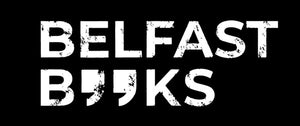Hughes, B. (2016). ‘Defying the I.R.A? Intimidation, coercion and communities during the Irish Revolution’. Liverpool. Liverpool University Press. Available for non Amazon home delivery here or quicker from Amazon.
Defying the I.R.A’ sets out to examine the relationship between the I.R.A and the civilian population during the Irish war of independence. The majority of historical accounts of this time have tended to focus solely on the belligerents. An effect of this has been to place unnecessary distance between the experiences of readers who have lived through our most recent ‘troubles’ and those of our grandparents.
In this aim, Brian Hughes book succeeds well – the focus here is primarily on the day to day lived experience of ordinary people in extraordinary times. The chapter ‘Collecting the Rates’ for example illustrates this skilfully by describing the difficulties presented in maintaining civil order at a time when both the state and the I.R.A collected rates as well as running parallel (if diametrically opposed) judicial systems of tribunals, magistrates etc.
The book owes a significant debt both to the work of Stathis Kallyvas as well as Peter Hart in providing some of the historiographical framework. Kallyvas has written of the logic of violence in a civil war context; Hughes further contextualises this by describing the near impossibility of civilians striving for neutrality during this period. This is particularly relevant when he writes of the experience of Unionists or Loyalists during this time. Any position shy of active or tacit support for the I.R.A could be (and often was) taken as suggestive of collaboration. Hughes writes well of the burden placed on members of the RIC or former members of British armed forces who were placed in impossible positions of isolation or hostility even in areas where I.R.A violence was perceived to be at a low level. All too familiar to a modern reader will be the notion that whilst political violence leaves an enormous toll in terms of death and injury; this is dwarfed by the legacy of lives thwarted, blighted or destroyed. And this legacy continues long after the violence has come to its official ‘end’.
The work of Peter Hart (particularly his controversial 1998 book ‘The I.R.A and its enemies’) receives a good deal of coverage here and this is particularly instructive when reconsidering incidents like the Dunmanway killings. Hart was criticised at the time for his suggestion that the killings had no military context but rather represented a form of ‘ethnic cleansing’ of Protestants in the Bandon area of Co. Cork. Hughes, with the benefit perhaps of a broader canvas, suggests, that whilst ethnic cleansing (though he does not use the phrase) may have occurred it is difficult at this distance to unpick the specific reasons for any killings shorn of any local context (for example- personal rivalries, economic factors or social difficulties). What Hughes suggests is that, although it is difficult to establish the motive, it is certain that religious disagreement was an obvious factor in this strife and the war of independence provided a welcome cover for acts of sectarian murder.
Of particular interest to readers might be the chapter dealing with ‘Defying the I.R.A in Belfast’. One particularly strong aspect of this chapter is an exploration of why the levels of conflict did not reach similar levels as those in other parts of the country such as Dublin, Cork or Donegal. The absence of conflict between state and non-state forces is mitigated however by the horrific intracommunal violence of the early 1920’s. This violence had been a feature of life in Belfast since the 1850’s but it now took on an even more virulent form. One slight concern was with the occasional absence of citation for some statements. For example Hughes writes that ‘Though Catholics were disproportionate victims of violence, both sides of the religious divide perpetrated violence … ranging from intimidation and expulsion to killing’ there is no evidence offered in support of any of these statements but this is a rare lapse in an otherwise meticulously sourced book.
Hughes makes excellent use of both the Irish and British state records – which provides one useful final illustration of the difficulties encountered by civilians during the time. In 1934 an egg-dealer from Arvagh Co. Cavan made a claim to the Irish Government for compensation for property damaged during the war of independence – he stressed his republican credentials, his family ‘gave all and got nothing’ in the Anglo-Irish war, – a car had been taken by the Black and Tans and a son ‘taken’…Stirring stuff you would agree? The fact that the same author made a simultaneous claim to the UK authorities for the same damage whilst stressing his ‘sworn allegiance to the British Government’ and his record as a police pensioner might be thought somewhat hypocritical or opportunistic. But, he represents a vast number of stories of people whose allegiances, loyalties or histories cannot be neatly summarised or easily dismissed.
Kindly reviewed by Dr. Deaglan Page

